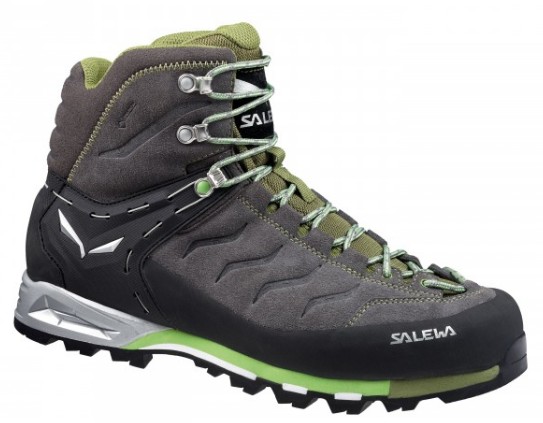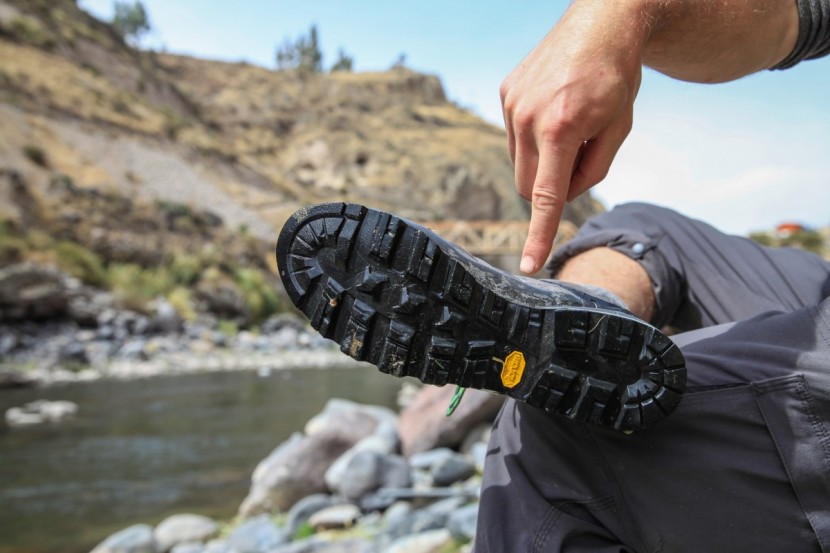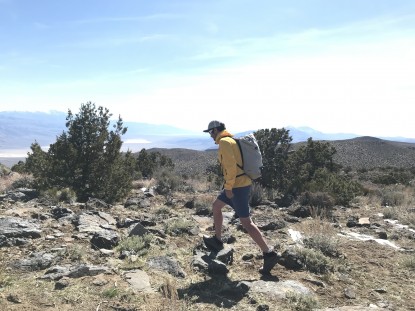Salewa Mountain Trainer Mid GTX Review
Our Verdict
Our Analysis and Test Results
The Salewa Mountain Trainer Mid GTX is a midweight hiker that puts its rigid sole first. This boot also has an impressive lacing system, good heel security, and great traction in mud and vertical rock. However, it carries a heavy feeling and has some serious drawbacks in terms of comfort.This model is most appealing to folks pursuing technical mountain-top heights.
Comfort
When we first put on the very stiff Mountain Trainer, it felt like a hard board underfoot. The inside of the ankle collar has memory padding, which is also somewhat uncomfortable out of the box. After its first short, 5 mile hike, our heels were already sore, and it didn't breathe well either. This boot requires the longest break-in period to soften it up and mold to your feet. However, it was still the least comfort footbed at the end of the three-month testing period. If you are looking for out-of-box comfort from a midweight, the Lowa Renegade GTX Mid can deliver. On the positive side, the rigid outsole does make walking across pointy rocks a non-issue.
Salewa was the only company in this review that sent two insert options along with the boots. Their Multi Fit Footbed Plus is an interchangeable layering system, allowing you to adjust the fit to your foot shape. This product features the narrowest footbed in this review and does not come in wide sizes.
The asymmetrical lacing system runs all the way down to the toes. Six lower, one middle lock, and two upper hook eyelets allow for a snug, custom fit. The 3F Total System connects the lacework to a heel-cinching cord that runs across the back of the foot and anchors in the midsole. The Keen Targhee II Mid is the only other boot in this model with a similar design for securing the heel into its cup.
Stability
With its super rigid design below the upper, the Mountain Trainer is one of the most laterally stable shoes we tested. The mid-stiff nylon shank keeps the boot from twisting and contorting under nearly any stress on or off trail. It has one of the shorter ankle heights of the midweights, with even the lightweight Lowa Tiago GTX Mid topping its height. This product also lost a point due to its very narrow outsole, measuring four inches at its widest point. We preferred a larger base for supporting our weight and the load in our packs.
The ankle collar, though, brings a little redemption in this metric. We liked that the leather part of the upper continues almost all the way up to the top of the collar on the sides, like on the Arc'teryx Bora2 Mid, for stiffer ankle stability. The back of the collar, which rests on the Achilles heel, is soft fabric. We liked this stiff on the side, soft in the back design, as it combined ankle stability with comfortable flexibility.
Traction
The Mountain Trainer had varied results here. It provided perhaps the most secure traction in mud, which hikers in rainy climates such as the in the Pacific Northwest will enjoy. It also tied the Bora2 for the title of best scrambling midweight. The Climbing Zone at the front of the Vibram Alpine Approach outsole provides substantial surface area contact for traction on vertical rock. The super stiff bottom of this boot is also ideal for edging.
Conversely, this product performed poorly on wet and dry rock. The lugs are deep and varied, but also completely smooth, thus lacking the textured surface featured on most other outsoles that helps gain better purchase. The narrow width of the outsole also didn't help us conquer scree fields with much efficiency. For this mixed purchase performance, we gave the Salewa model a score of six in this metric.
Weight
Weighing 3.09 lbs, this was the second-lightest midweight model, following the Renegade from Lowa. That said, we thought that this rigid sole strapped to our feet made them feel heavier than they really are.
Water Resistance
This boot has a flood height of 5.875 inches, modest for a midweight. The Salewa model didn't leak throughout our testing period, despite being submerged in creeks, puddles, and lake edges. We really liked the upper's strong resistance to absorbing water. Straight out of the box, it beaded off the water and continued to do so very well throughout the testing period. This will diminish over time, but we enjoyed it while it lasted!
Durability
The Mountain Trainer provides solid durability, scoring an eight in this metric. It showed virtually no signs of wear and tear at the end of all our tests and use. The seams holding together the suede leather upper are double-stitched, and appear to be high quality. Our only point of concern is the rubber rand. It's glued to the upper, and we have seen way too many rands delaminate once the glue breaks up over time. We prefer the double-stitched approach the Vasque St. Elias FG GTX took to its rand protection.
Best Applications
We would recommend this boot if you are frequently committing to alpine approaches. The rigid and sticky outsole is great for lateral stability and scrambling. The stiff edges also make this boot a good option for via ferratas.
Value
The Mountain Trainer is one of the most expensive boots in this review, but only performed in the bottom third among this pool of competitors. It's hard to call this model a good value, especially if you are looking for performance in a variety of applications.
Conclusion
The Salewa Mountain Trainer Mid GTX has some great features, including its combined lacing and heel-securing systems. We also appreciate a pair of hikers that are built to last, as this one certainly appears to be. However, we consider general comfort to be the most important factor in hiking boots, and this boot came up short in this category. While your feet will probably take a long time to get used to this boot, it's quality construction should last you several seasons.















